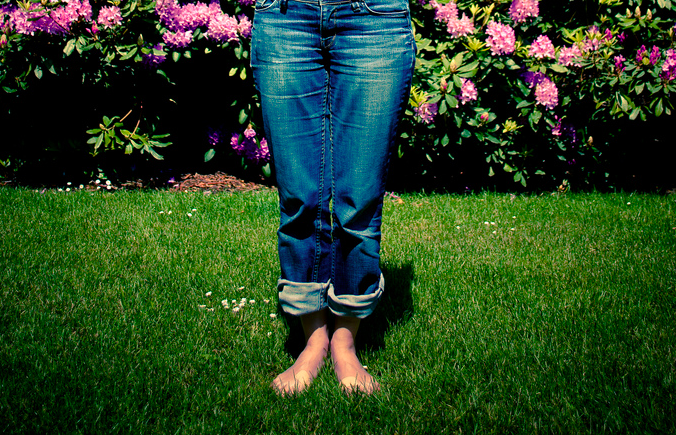Our lives are often hectic. We go from one project to the next, feeling scattered and overwhelmed. Grounding brings us present to our bodies and emotions. Grounding “…provides us something very real to stand on when dealing with the outer world – the solid ground of our true feelings” (McKay et al., 2001, p. 126). The following are my top five favorite grounding techniques: creative journaling, flow meditation, breath work, progressive muscle relaxation and aromatherapy.

Creative Journaling
Creative journeling is a form of journaling where you use diverse medium. You might draw, paint or use a collage to express your emotions. Creative Journaling is “…a chance to experience a deeper sense of self. It quiets, momentarily, the headlong rush through life so that you can be the observer as well as the actor in the play” (McKay et al., 2001, p. 120).
Useful tools are a journal with blank pages, colourful pens, collage materials and paints. Create a space to be artistic with a table and all the supplies you need. You will also need uninterrupted time.
Flow Meditation
“Stay with the flow” is a type of mediation from the book The Self-Nourishment Companion. It is a centering technique where you alternate paying attention between you inner and outer experience. It “…helps you relax and feel more aware of yourself” (McKay et al., 2001, p. 130). Staying with the flow is designed to help you to become more present.
Sit still. First tune into the sensations happening in your body. Do you feel any tension anywhere? Pay attention to your emotional state. Try to avoid past and future thinking. Then tune into sounds outside your body. Do you hear traffic? Do you hear bird song? Gently alternate between these two present states until you feel grounded, silently naming your experience.
Breath Work
Breathing is a very basic meditation but also very effective. Often we breathe very shallow breaths and become anxious in our bodies. Deep belly breaths bring us back to calm through centering and grounding us.
A simple breathing technique is triangle breathing. Breathe in for a count of three, hold for three and breathe out for five. Another breathing technique is alternate nostril breathing which is particularly effective when under stress. Use your hand to block off your right nostril. Breathe in through your left nostril. Hold for a count of three. Plug your left nostril and breathe out your right nostril. Breathe in your right nostril while your left one is plugged. Continue alternating for a couple minutes.
Progressive Muscle Relaxation
This full body relaxation technique is particularly helpful when done before bed. You start by breathing in and out full breaths into your abdomen. As you exhale let your whole body release into relaxation. Starting with arms, tense your muscles for seven seconds. Do your arms, head, neck, and torso continuing through your whole body. Relax after tensing and notice tension draining from your body. Pay attention to the sensations of relaxation. Repeat if necessary.
Aromatherapy
Aromatherapy “…uses pure plant essential oils to enhance emotional wellbeing and to restore your total health in many ways” (McKay et al., 2001, p. 46). Scents often evoke positive feelings. For example, salt in the air may bring back childhood memories of playing by the ocean. These comforting feelings help you relax and unwind.
There are a number of ways to use oils. My two favorites are diffusing oils and putting oils in my bath. Oils for relaxing include lavender and chamomile. These oils promote relaxation and even help you sleep better.
Grounding is a necessary tool in busy modern life. There are numerous effective tools for learning to stay present. Experiement with the above techniques and find your way to calm.